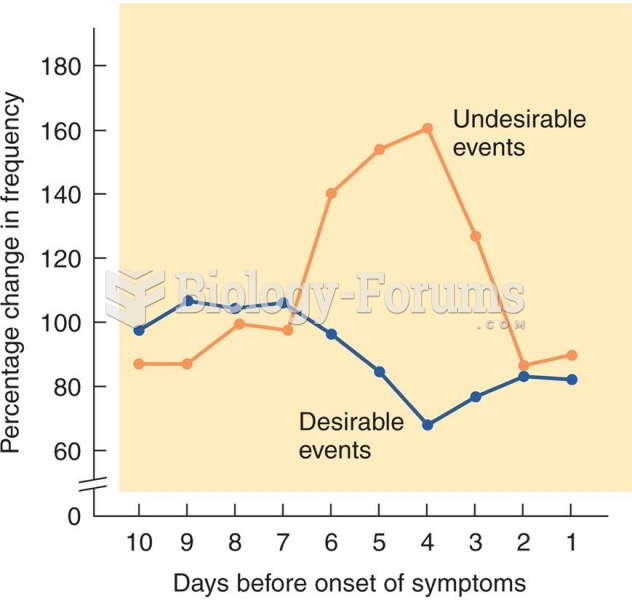Answer to Question 1
In hot, humid weather, sweat doesn't evaporate well because the surrounding air is already laden with water. In hyperthermia, body heat builds up and triggers maximum sweating, but without sweat evaporation, little cooling takes place. In such conditions, active people must take precautions to prevent heat stroke. To reduce the risk of heat stroke, drink enough fluid before and during the activity, rest in the shade when tired, and wear lightweight clothing that allows sweat to evaporate. (Hence the danger of rubber or heavy suits that supposedly promote weight loss during physical activitythey promote profuse sweating, prevent sweat evaporation, and invite heat stroke.) If you ever experience any of the symptoms of heat stroke, stop your activity, sip fluids, seek shade, and ask for help. Heat stroke can be fatal, young people often die of it, and these symptoms demand attention.
In cold weather, hypothermia, or low body temperature, can be as serious as heat stroke is in hot weather. Inexperienced, slow runners participating in long races on cold or wet, chilly days are especially vulnerable to hypothermia. Slow runners who produce little heat can become too cold if clothing is inadequate. Early symptoms of hypothermia include feeling cold, shivering, apathy, and social withdrawal. As body temperature continues to fall, shivering may stop, and disorientation, slurred speech, and change in behavior or appearance set in. People with these symptoms soon become helpless to protect themselves from further body heat losses. Even in cold weather, however, the active body still sweats and still needs fluids. The fluids should be warm or at room temperature to help protect against hypothermia.
Answer to Question 2
Protein Used in Muscle Building: Synthesis of body proteins is suppressed during activity. In the hours of recovery following activity, though, protein synthesis accelerates beyond normal resting levels. Eating high-carbohydrate foods immediately after exercise accelerates muscle glycogen storage. Similarly, research shows that eating high-quality protein, either by itself or together with carbohydrate, enhances muscle protein synthesis. With food intake, of course, insulin is secreted. Insulin not only stimulates muscle protein synthesis, but also greatly inhibits muscle protein breakdown. Remember that the body adapts and builds the molecules, cells, and tissues it needs for the next period of activity. Whenever the body remodels a part of itself, it tears down old structures to make way for new ones. Repeated activity, with just a slight overload, triggers the protein-dismantling and protein-synthesizing equipment of each muscle cell to make needed changesthat is, to adapt.
Protein Used as Fuel: Not only do athletes retain more protein in their muscles, but they also use more protein as fuel. Muscles speed up their use of amino acids for energy during physical activity, just as they speed up their use of fat and carbohydrate. Still, protein contributes only about 10 percent of the total fuel used, both during activity and during rest. The most active people of allendurance athletesuse large amounts of all energy fuels, including protein, during performance, but they also eat more food and therefore usually consume enough protein.







